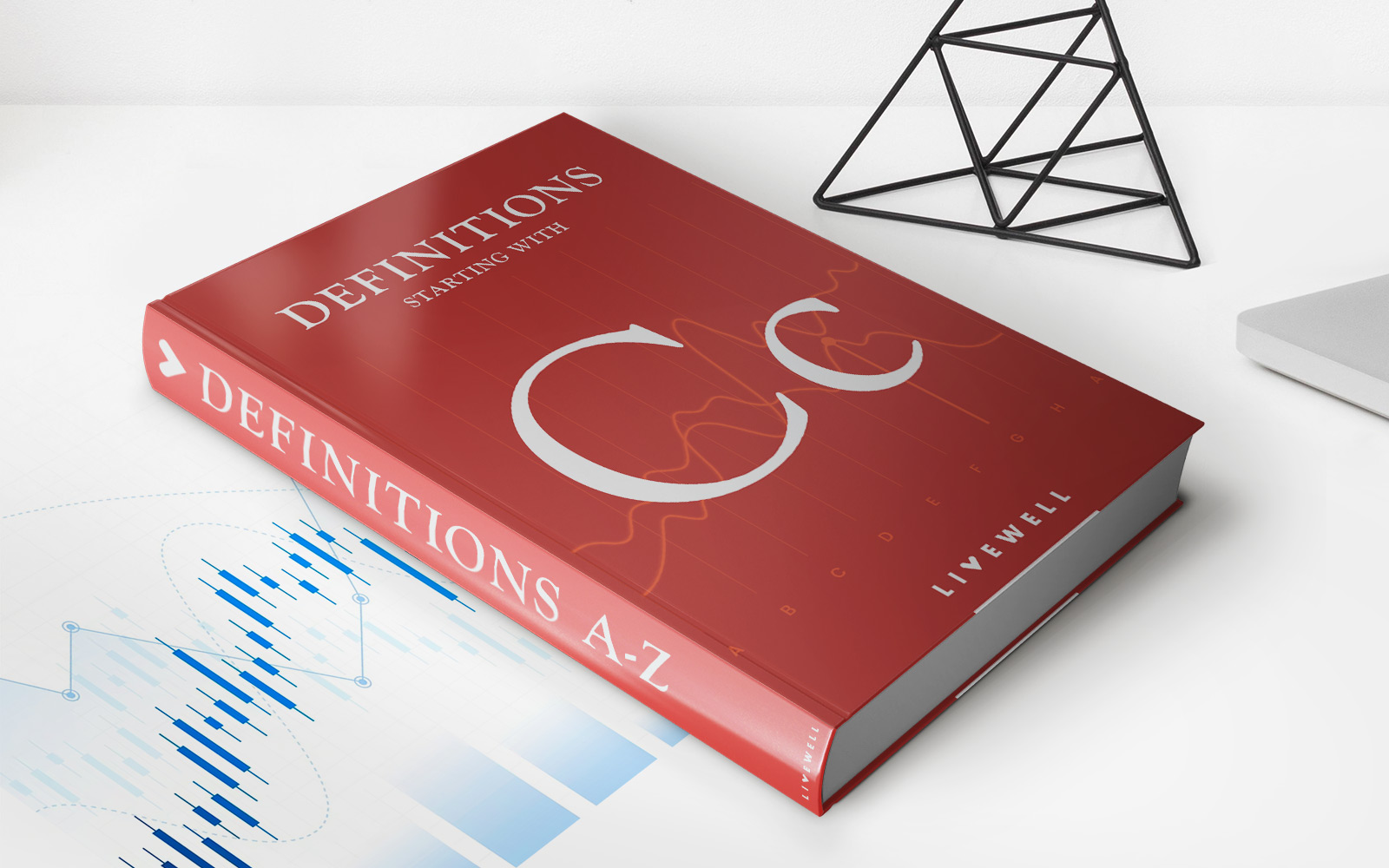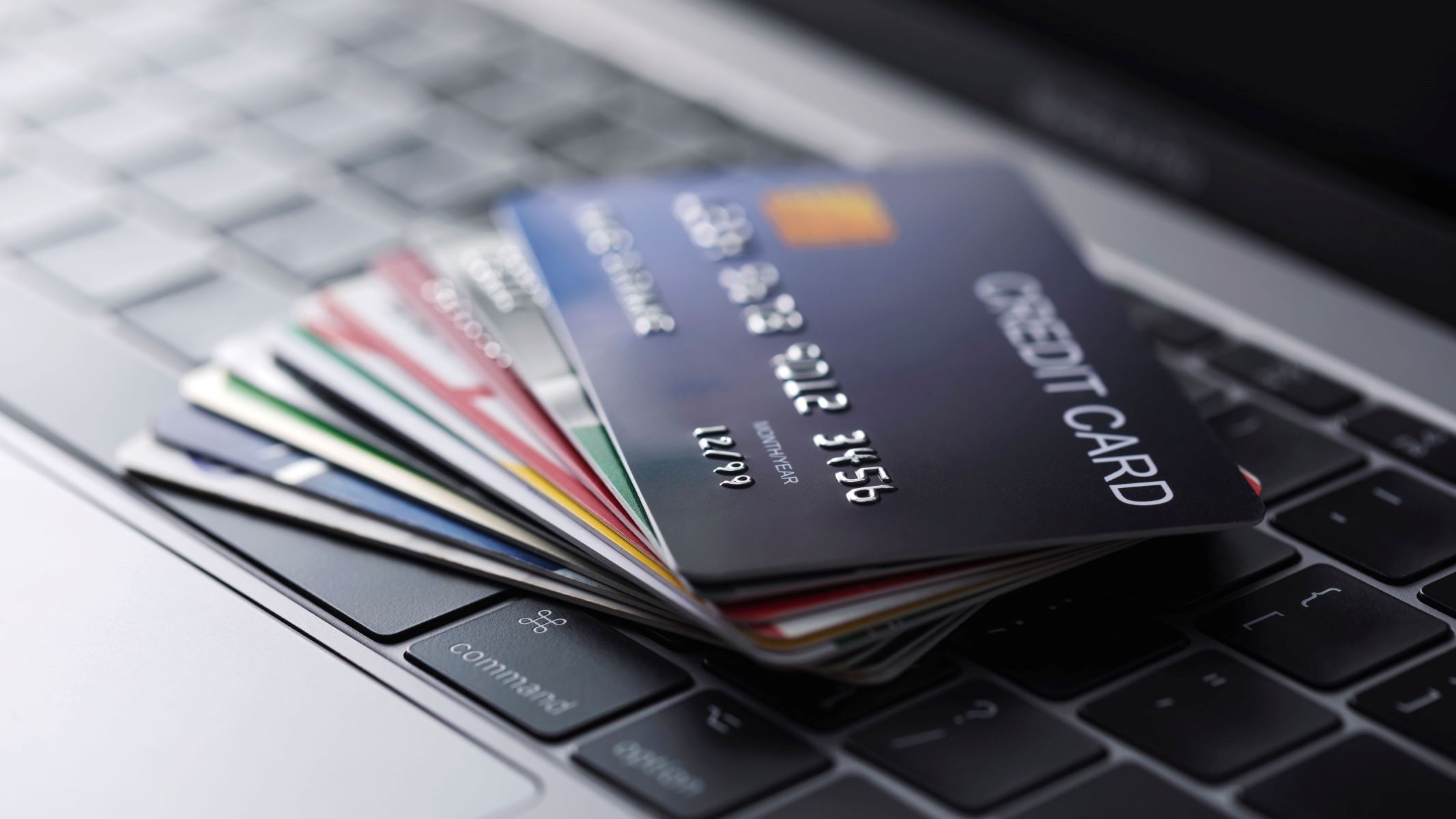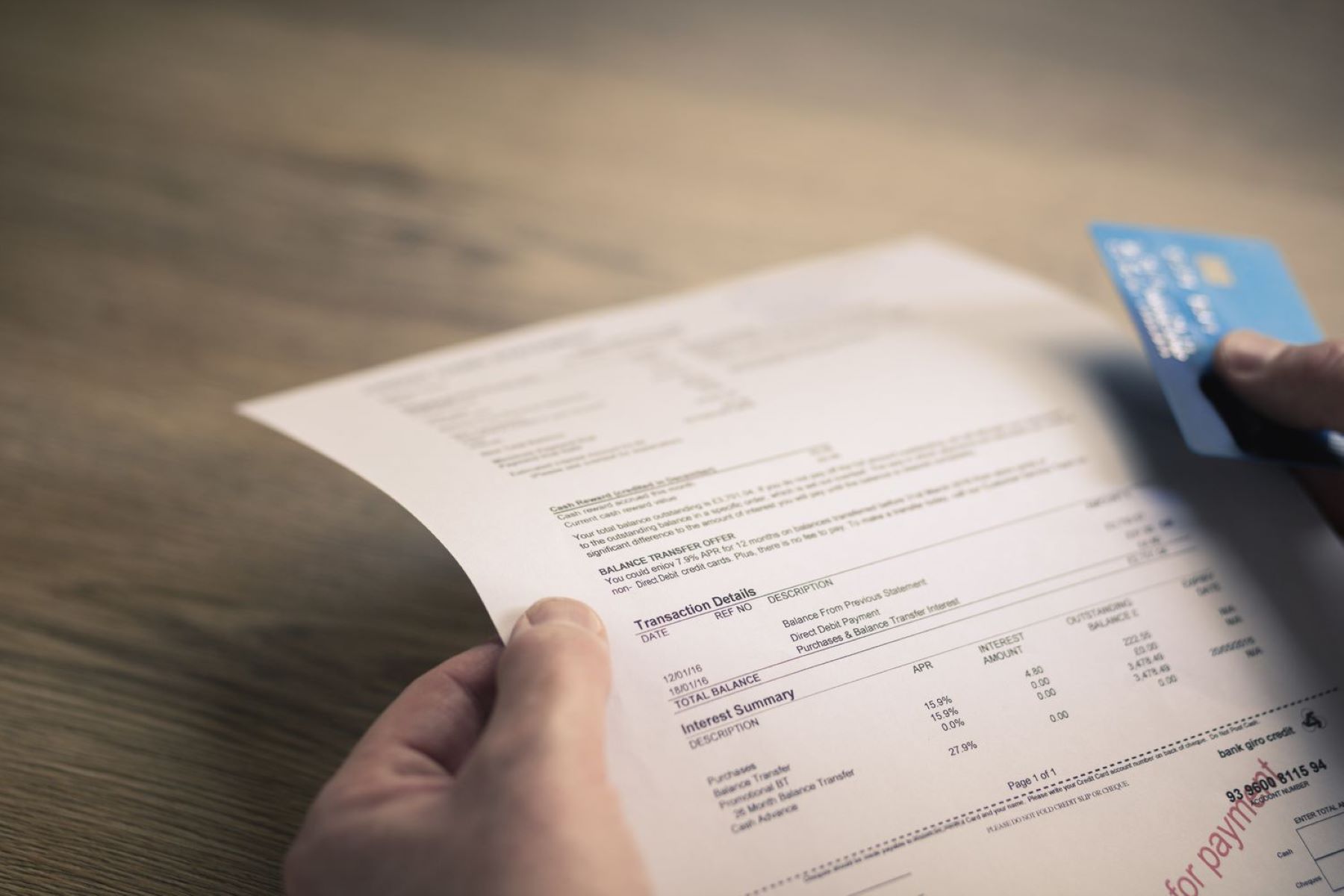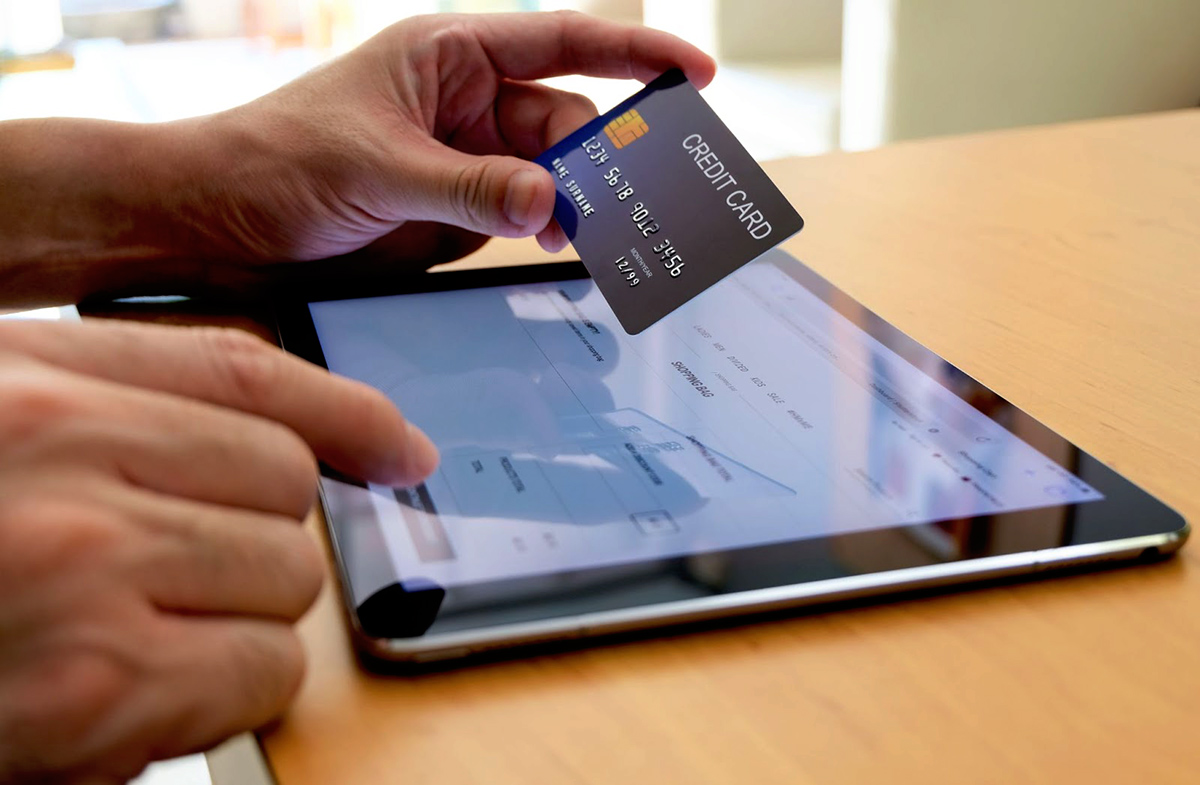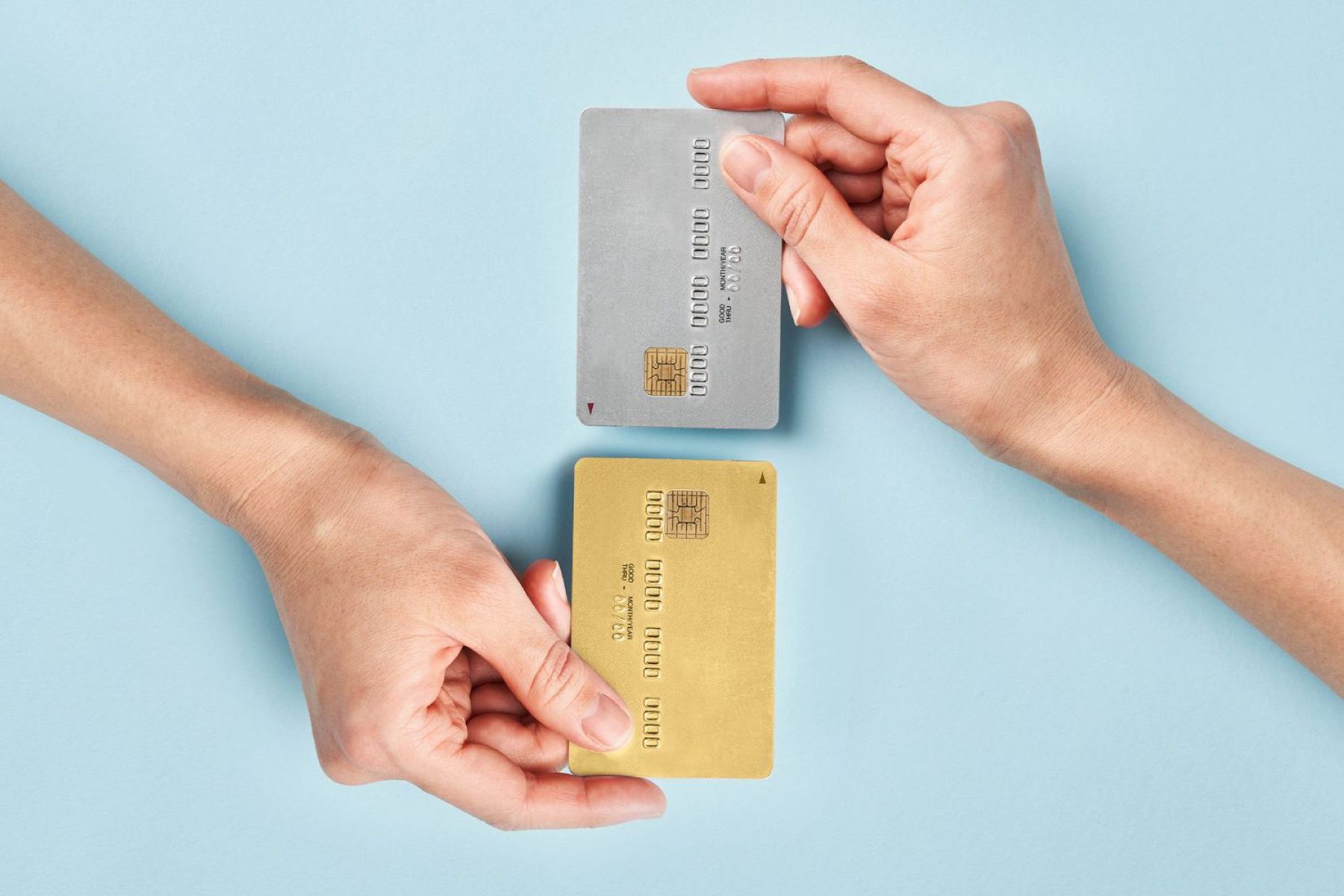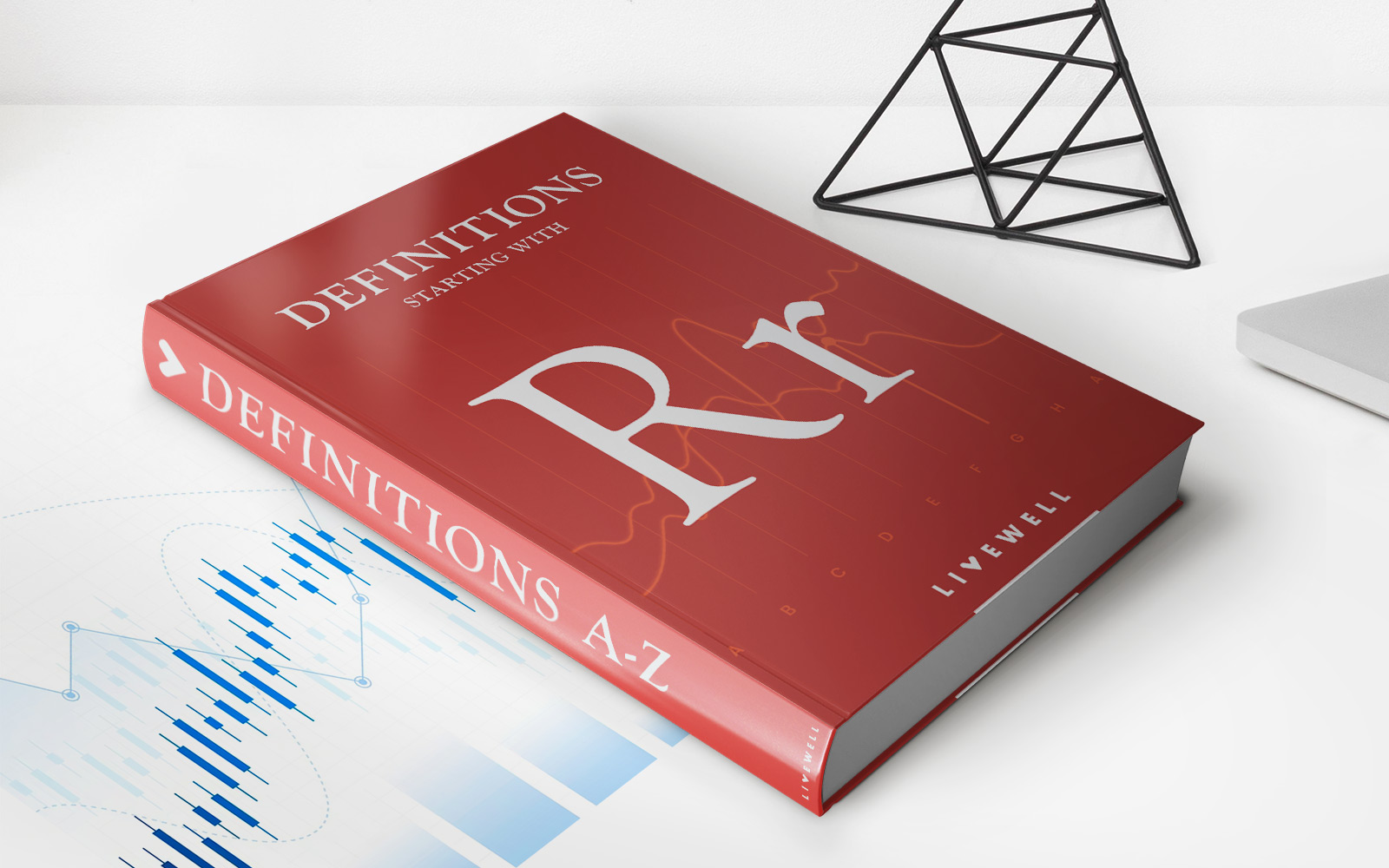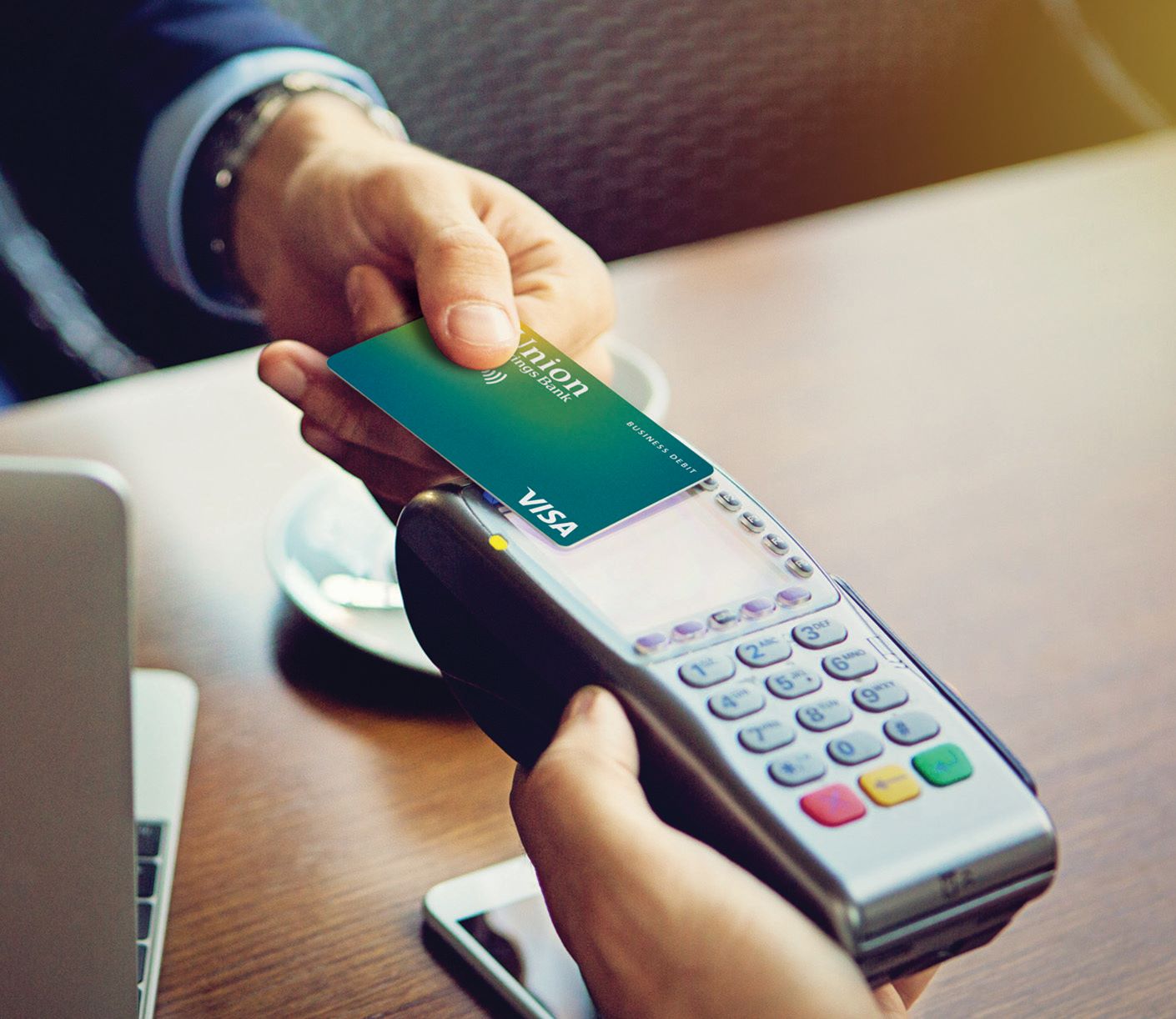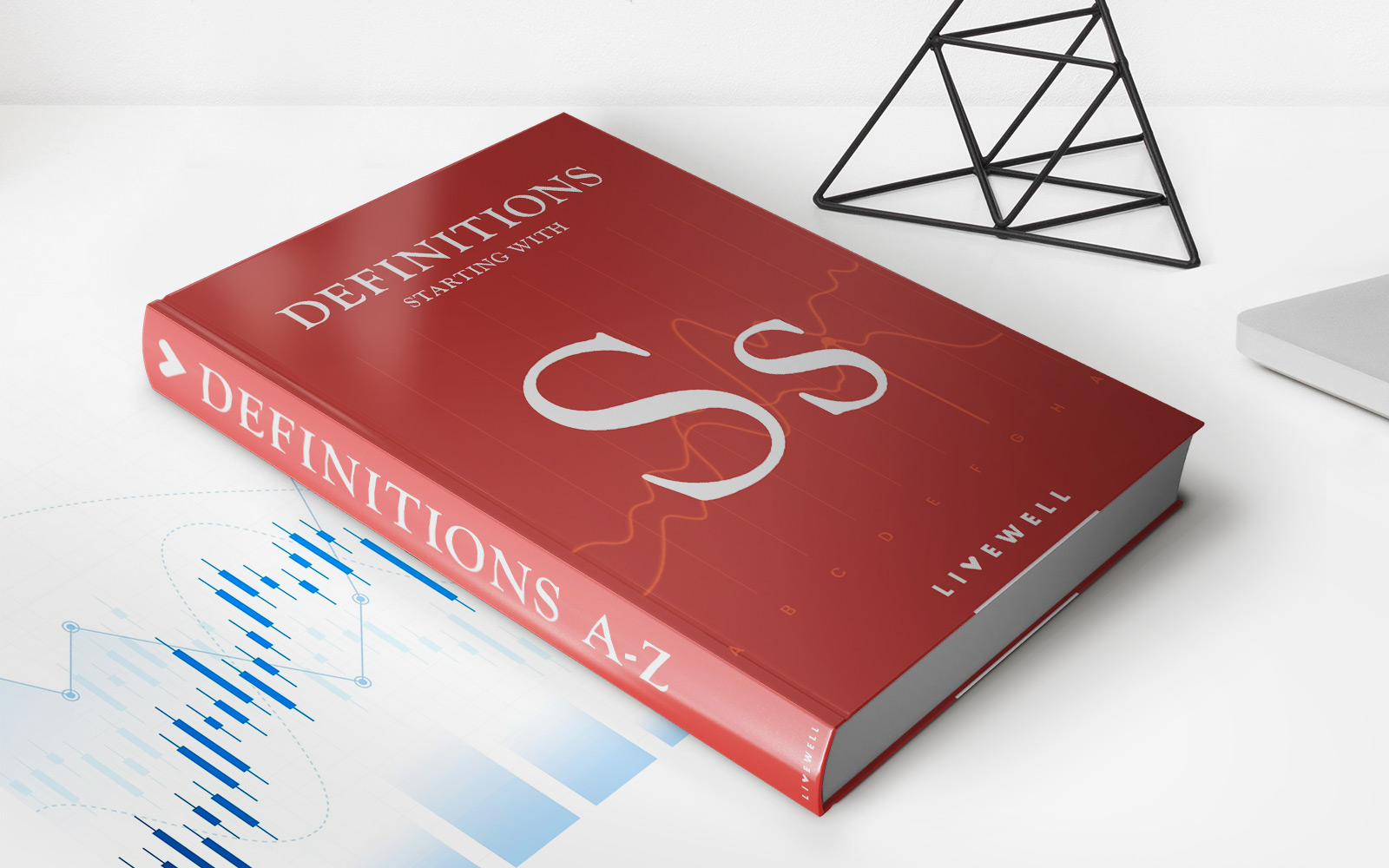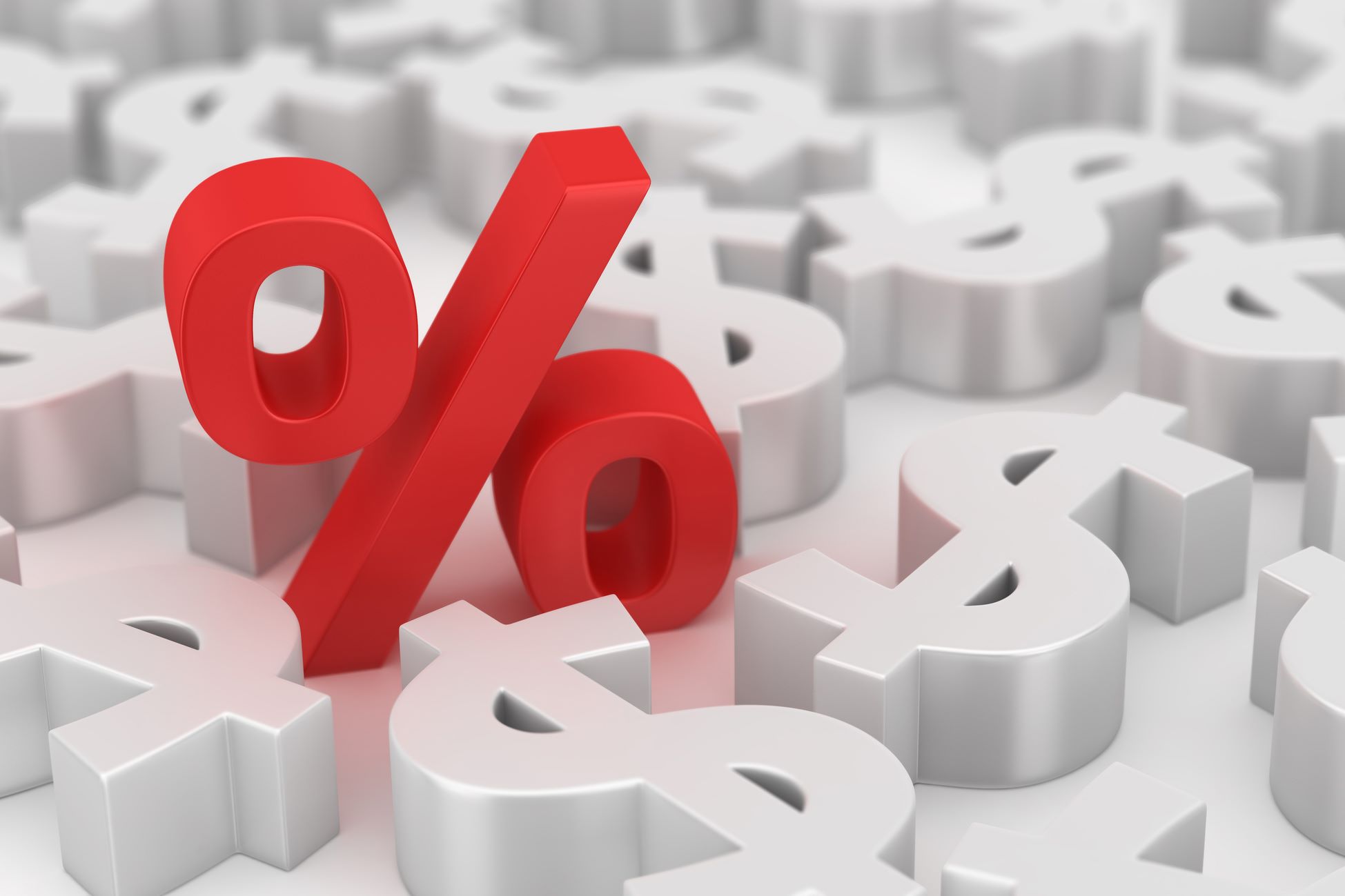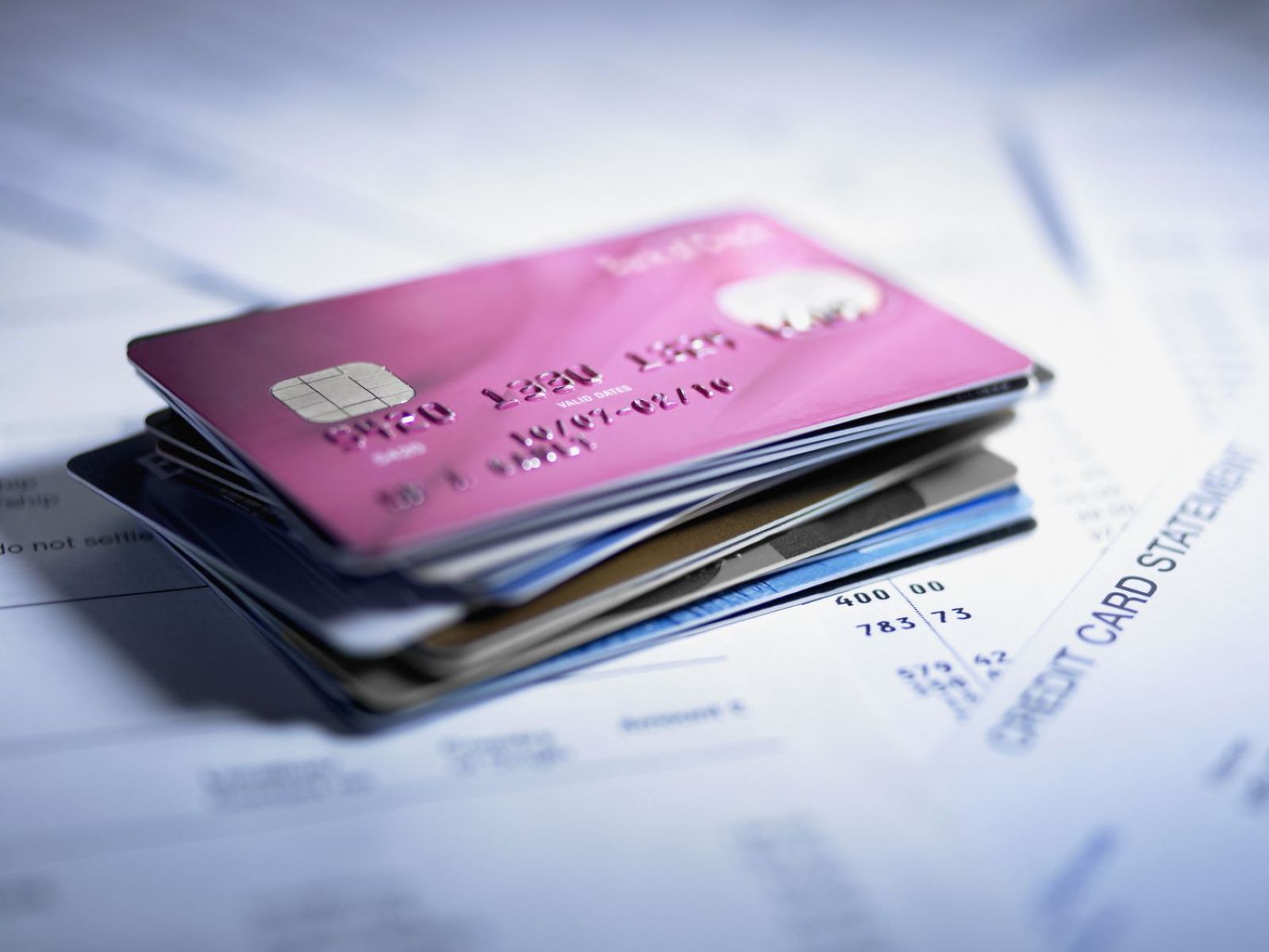

Finance
What Is VIOC Charge On Credit Card
Published: October 24, 2023
Learn about VIOC charge on your credit card and how it relates to your finances. Find out what it means and how to manage it effectively.
(Many of the links in this article redirect to a specific reviewed product. Your purchase of these products through affiliate links helps to generate commission for LiveWell, at no extra cost. Learn more)
Table of Contents
Introduction
Have you ever come across a mysterious charge on your credit card statement labeled “VIOC”? If so, you’re not alone. Many people find themselves puzzled when they see this unfamiliar acronym on their billing statement. In this article, we aim to shed some light on what exactly a VIOC charge is, why it appears on your credit card statement, and how you can deal with it if you suspect any issues.
Understanding the charges on your credit card statement is essential for maintaining control over your finances. With the increasing prevalence of online shopping and digital transactions, it’s become even more crucial to stay vigilant about the charges you are being billed for.
The acronym “VIOC” stands for “Visa International Operating Regulations Compliance.” It is a reference to a compliance fee that credit card issuers enforce on merchants to ensure adherence to the rules and regulations set forth by Visa.
Visa, being one of the largest and most widely used credit card networks globally, has established a set of operating regulations that all merchants must comply with to process Visa transactions. These regulations are designed to protect both the cardholders and the merchants, ensuring the security and integrity of the payment ecosystem.
It’s important to note that while the charge is labeled as “VIOC,” it may appear differently on your credit card statement. Different credit card issuers may use alternative acronyms or descriptors for this compliance fee. So, if you don’t see the exact term “VIOC,” don’t be surprised if you come across a similar charge with a different name.
In the next sections, we will delve deeper into the details of the VIOC charge, dissect credit card statements to understand their components, explore the possible reasons for observing VIOC charges, and provide guidance on resolving any issues that may arise related to these charges.
Overview of VIOC Charge
The VIOC charge represents a compliance fee imposed on merchants by credit card networks, such as Visa, to ensure adherence to their operating regulations. It is important to understand that this charge is not directly related to any product or service you may have purchased. Instead, it’s a fee incurred by the merchant for processing Visa transactions.
The purpose of the VIOC charge is to ensure that merchants comply with a set of guidelines and requirements established by Visa. These guidelines encompass various aspects, including data security, fraud prevention, and transaction processing standards. By enforcing these regulations, Visa aims to maintain the integrity and security of the payment ecosystem.
It’s important to note that merchants may pass on these compliance fees to the customers to offset the additional costs they incur. This is why you may see the VIOC charge on your credit card statement. However, keep in mind that the fee may appear under a different name or acronym, depending on your credit card issuer.
The amount of the VIOC charge can vary and is typically a percentage of the transaction value or a flat fee imposed on each Visa transaction. The specific fee structure depends on the merchant’s agreement with their credit card processor or acquiring bank.
It’s worth mentioning that the VIOC charge is different from other fees that may appear on your credit card statement, such as currency conversion fees, transaction fees, or interest charges. Understanding the intricacies of these charges can help you gain a clearer picture of your overall credit card statement and prevent any confusion or disputes.
Now that we have an understanding of the overview of the VIOC charge, let’s dive into deciphering a credit card statement to better comprehend how these charges are presented and identified.
Understanding the Credit Card Statement
When it comes to deciphering your credit card statement, it’s crucial to familiarize yourself with the different components and terms used. Understanding the layout of your statement will help you identify and understand the VIOC charge or any other charges that appear.
Here are some common sections you may find on your credit card statement:
- Account Summary: This section provides an overview of your credit card account, including your statement balance, minimum payment due, and available credit. It gives you a snapshot of your current financial status.
- Transactions: This section lists all the transactions made using your credit card during the billing cycle. Each transaction includes details such as the merchant name, transaction date, transaction amount, and any applicable fees or charges.
- Payments and Credits: This section reflects any payments you have made towards your credit card balance, as well as any credits or refunds issued. It helps you keep track of your payments and account for any adjustments.
- Fees and Finance Charges: This section outlines any fees or charges associated with your credit card, such as annual fees, late payment fees, and interest charges. It’s essential to review this section to ensure accuracy and identify any potential errors.
- Summary of Rewards: If your credit card offers a rewards program, this section will summarize the rewards you have earned during the billing cycle. It may include details on cash back, points, or other rewards accrued.
- Important Messages or Notices: Credit card issuers often include important messages or notices on the statement, such as changes in terms and conditions or promotional offers. Make sure to review this section for any updates or relevant information.
To locate the VIOC charge or any other compliance fees on your credit card statement, you should carefully review the “Transactions” section. Look for any charges with descriptors or acronyms related to compliance or operating regulations.
If you come across a charge labeled as VIOC or similar, make a note of the transaction details, such as the date, amount, and merchant name. This information will be valuable when addressing any concerns or disputes regarding the charge.
Now that you have a better understanding of how credit card statements are structured and the various sections to look out for let’s explore some possible reasons for encountering a VIOC charge.
Possible Reasons for VIOC Charge
There are several possible reasons why you may encounter a VIOC charge on your credit card statement. Understanding these reasons can help clarify why the charge appears and whether it is legitimate. Here are a few scenarios that could explain the presence of a VIOC charge:
- Merchant Compliance: The most common reason for a VIOC charge is that the merchant you made a purchase from is enforcing compliance with Visa’s operating regulations. This fee is their way of covering the cost of meeting the required standards. Merchants who process a high volume of Visa transactions may be subject to more stringent regulations, resulting in a higher compliance fee.
- New Merchant or Service: If you have recently made a purchase from a new merchant, particularly an online or international vendor, they may impose a VIOC charge to ensure compliance with Visa’s regulations. This is more likely to occur with smaller or less established merchants who may not have a robust infrastructure in place to guarantee compliance without additional fees.
- Security Enhancements: Visa continuously updates and enhances its security protocols to protect cardholders and prevent fraud. Merchants may incur additional costs to implement these security enhancements, and they may pass some of these expenses on to customers in the form of a VIOC charge.
- Transaction Specific Compliance: Certain types of transactions may require additional compliance measures. For example, high-value transactions, international transactions, or transactions involving specific industries may trigger a higher VIOC charge due to the additional scrutiny and protections required.
- Incorrect Labeling: Sometimes, the VIOC charge may be mistakenly labeled or appear under a different name on your credit card statement. In such cases, it’s essential to review the transaction details and contact your credit card issuer or the merchant for clarification.
If you notice a VIOC charge that you believe is erroneous or unauthorized, it’s crucial to investigate the transaction and take appropriate action. The next section will guide you through the steps to identify and resolve any issues related to VIOC charges on your credit card statement.
Identifying Unauthorized VIOC Charges
While VIOC charges are typically legitimate fees imposed by merchants for compliance with Visa’s operating regulations, it’s essential to stay vigilant and identify any unauthorized charges on your credit card statement. Here’s how you can identify and address potential unauthorized VIOC charges:
- Review Your Statements: Carefully review your credit card statements each month to identify any unfamiliar or suspicious charges, including VIOC charges. Look for any transactions that you don’t recognize or didn’t authorize.
- Contact the Merchant: If you come across a VIOC charge from a merchant you are unfamiliar with or don’t remember making a purchase from, reach out to the merchant’s customer support. Inquire about the charge and request clarification or a refund if it is indeed unauthorized.
- Check for Duplicate Charges: Occasionally, you may notice duplicate transactions on your credit card statement, including duplicate VIOC charges. This can happen due to technical glitches or processing errors. If you identify any duplicates, contact your credit card issuer to have them rectify the issue and ensure you receive a refund.
- Monitor for Fraudulent Activity: It’s crucial to regularly monitor your credit card activity for any signs of fraudulent activity. This includes not only VIOC charges but also other unauthorized transactions. If you suspect fraud, contact your credit card issuer immediately to report the incident and take appropriate actions to secure your account.
- Set Up Transaction Alerts: Many credit card issuers offer transaction alerts via email or text message. These alerts notify you of any new transactions on your account, allowing you to promptly identify and address any potential unauthorized charges, including VIOC fees.
- Utilize Credit Card Security Features: Familiarize yourself with the security features provided by your credit card issuer. This may include options like virtual card numbers, two-factor authentication, or biometric authentication. These features can provide an extra layer of security and help prevent unauthorized charges.
If you suspect that the VIOC charge is indeed unauthorized or fraudulent, it’s important to take immediate action. Contact your credit card issuer to report the unauthorized charge and initiate the resolution process. They will guide you through the necessary steps to dispute the charge and protect your financial interests.
Now that we’ve covered how to identify and address unauthorized VIOC charges, let’s explore the steps you can take to resolve any issues related to these charges on your credit card statement.
Steps to Resolve VIOC Charge Issues
If you encounter any issues with a VIOC charge on your credit card statement, it’s important to take proactive steps to resolve the matter. Here are the key steps you can follow to address VIOC charge issues:
- Gather Documentation: Collect all relevant documentation related to the VIOC charge, including your credit card statement, transaction receipts, and any correspondence with the merchant. These documents will serve as evidence during the resolution process.
- Contact the Merchant: Reach out to the merchant’s customer support to discuss the VIOC charge and seek clarification. Provide them with the transaction details, including the date, amount, and any relevant information. Express your concerns and request a refund or resolution.
- Dispute with Credit Card Issuer: If your attempt to resolve the issue with the merchant is unsuccessful or if you suspect fraudulent activity, contact your credit card issuer. Report the unauthorized or disputed VIOC charge and provide them with all the necessary details. They will initiate an investigation and guide you through the dispute resolution process.
- File a Formal Dispute: In some cases, you may need to file a formal dispute with your credit card issuer. Follow their instructions and complete the required forms or documentation to initiate the dispute process. Be sure to provide a clear explanation of the issue and any supporting evidence you have.
- Monitor the Dispute Progress: Keep track of the progress of your dispute with the credit card issuer. They will investigate the matter and communicate their findings to you. Stay in touch with them and provide any additional information or documentation they request.
- Review the Outcome: Once the investigation is complete, your credit card issuer will inform you of the outcome. If the VIOC charge is deemed unauthorized or erroneous, they will typically remove the charge from your statement and issue a refund. If they find the charge to be valid, they will provide an explanation for their decision.
- Escalate if Necessary: If you are not satisfied with the outcome or if you believe there has been an error in the resolution process, you may consider escalating the matter. This can involve contacting the relevant consumer protection agencies or seeking legal advice if the situation warrants it.
Remember to document all communication and steps taken during the resolution process. This will help you keep a record of your efforts and assist in the event of any further disputes or inquiries.
Now that we’ve covered the steps to resolve VIOC charge issues, let’s discuss some proactive measures you can take to prevent future incidents.
Preventing Future VIOC Charge Incidents
While encountering a VIOC charge on your credit card statement can be confusing and frustrating, there are steps you can take to prevent such incidents in the future. By implementing these proactive measures, you can reduce the chances of unauthorized charges and maintain control over your credit card transactions. Here are some preventive measures you can follow:
- Monitor Your Credit Card Statements: Regularly review your credit card statements to identify any unfamiliar or unauthorized charges. Pay close attention to the transaction details, including merchant names and amounts.
- Keep Track of Your Purchases: Maintain a record of your purchases, whether it’s through digital receipts, email confirmations, or manual note-taking. This way, you can easily cross-reference your credit card statement and verify the accuracy of the charges.
- Set Up Transaction Alerts: Take advantage of transaction alerts offered by your credit card issuer. Configure notifications to receive real-time updates on any new transactions made with your card. This can help you quickly identify any unauthorized charges, including VIOC fees.
- Use Secure Online Shopping Practices: When making online purchases, ensure you are on a secure and reputable website. Look for the padlock symbol in the address bar and verify that the website’s URL starts with “https://” to indicate a secure connection. Avoid entering your credit card information on unsecured or suspicious sites.
- Be Cautious with Sharing Your Credit Card Information: Only provide your credit card details to trusted merchants or websites. Avoid sharing your card information over email or text message, as these channels can be vulnerable to security breaches.
- Keep Your Devices Secure: Protect your electronic devices with strong passwords or biometric authentication. Install reliable antivirus software and keep your operating system and apps up to date to minimize the risk of malware or hacking attempts.
- Be Wary of Phishing Attempts: Stay vigilant against phishing attempts, where scammers pose as legitimate organizations to trick you into revealing sensitive information. Avoid clicking on suspicious links or providing personal information in response to unsolicited emails, calls, or text messages.
- Regularly Update Your Contact Information: Keep your credit card issuer informed about any changes to your contact information. This ensures that you receive important notifications and alerts promptly, allowing you to act quickly if any issues arise.
- Report Lost or Stolen Cards Immediately: If you lose your credit card or suspect it has been stolen, report it to your credit card issuer immediately. They can freeze your account and issue you a new card to prevent unauthorized charges.
By implementing these preventive measures, you can significantly reduce the risk of encountering unauthorized VIOC charges or any other fraudulent activity on your credit card. Stay vigilant, monitor your transactions, and take swift action if you notice any suspicious activity.
Now, let’s conclude our discussion on VIOC charges and credit card security.
Conclusion
In conclusion, understanding VIOC charges and being familiar with your credit card statement is crucial for maintaining control over your finances and protecting yourself from unauthorized charges. While the VIOC charge represents a compliance fee imposed on merchants to ensure adherence to Visa’s operating regulations, it’s important to review your statements and identify any unfamiliar or suspicious charges.
If you come across a VIOC charge that you believe is unauthorized, take immediate action. Reach out to the merchant’s customer support for clarification and request a refund if necessary. If you suspect fraudulent activity, contact your credit card issuer to report the unauthorized charge and initiate the resolution process.
To prevent future incidents, monitor your credit card statements regularly, set up transaction alerts, and keep track of your purchases. Use secure online shopping practices, be cautious with sharing your credit card information, and keep your devices secure. Stay vigilant against phishing attempts and report lost or stolen cards immediately.
By following these preventive measures, you can minimize the risk of encountering unauthorized charges, including VIOC fees, and maintain the security of your credit card transactions.
Remember, if you have any concerns or questions about VIOC charges or your credit card statement, it’s always best to contact your credit card issuer directly. They can provide you with specific guidance and assistance tailored to your situation.
By staying informed, vigilant, and proactive, you can protect yourself from fraudulent activities and enjoy peace of mind when using your credit card for purchases.


